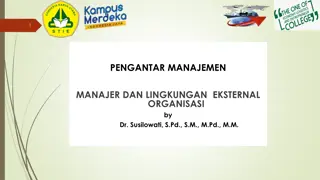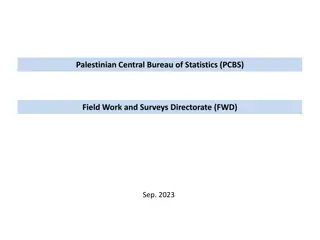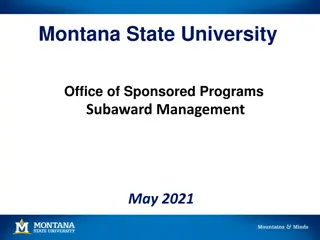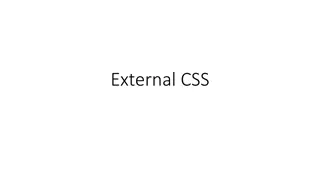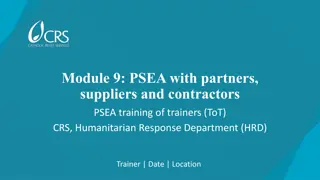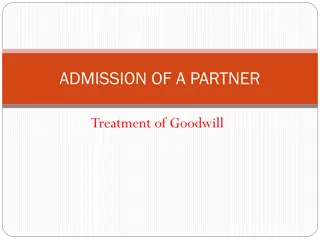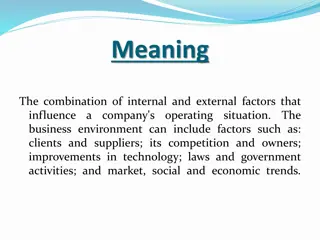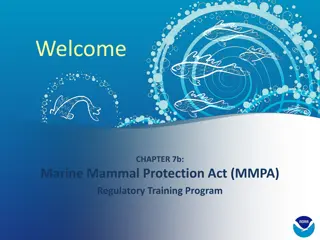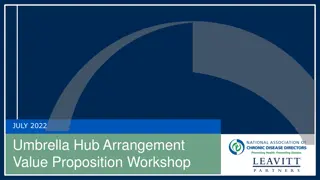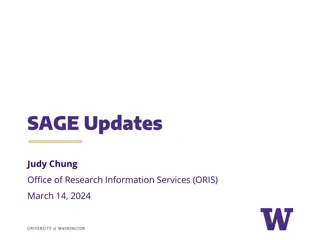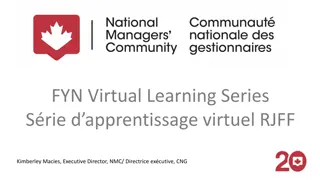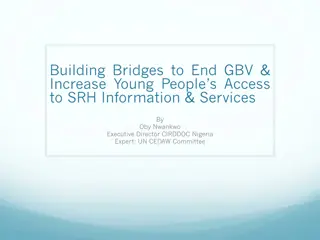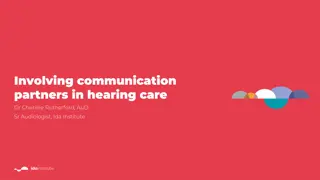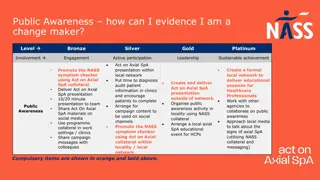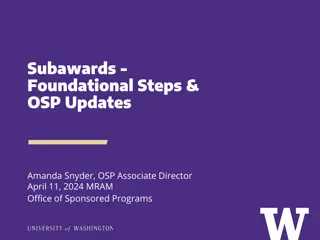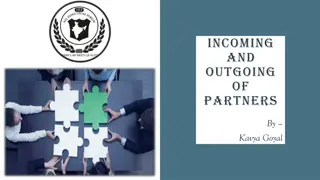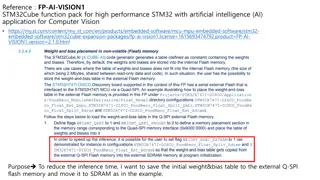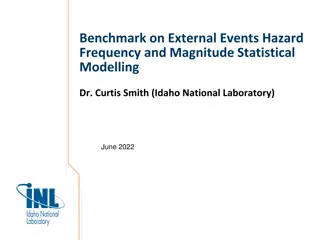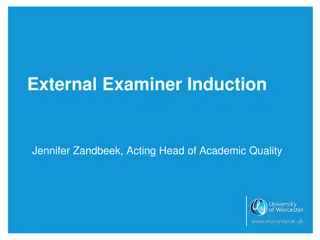OSP Awareness - Collaborating with External Partners
The nuances of working with subrecipients, consultants, and vendors in sponsored programs. Understand the importance of stewardship of sponsored funds and complying with university policies. Gain insights into proposal development requirements and formalizing relationships with external collaborators.
Download Presentation

Please find below an Image/Link to download the presentation.
The content on the website is provided AS IS for your information and personal use only. It may not be sold, licensed, or shared on other websites without obtaining consent from the author.If you encounter any issues during the download, it is possible that the publisher has removed the file from their server.
You are allowed to download the files provided on this website for personal or commercial use, subject to the condition that they are used lawfully. All files are the property of their respective owners.
The content on the website is provided AS IS for your information and personal use only. It may not be sold, licensed, or shared on other websites without obtaining consent from the author.
E N D
Presentation Transcript
Working with Subrecipients, Consultants, and Vendors OSP AWARENESS SPONSOREDPROGRAMS.SYR.EDU OSPOFF@SYR.EDU
Collaborating with External Parties Today s Topics Proposal Development and External Collaborators What do you need? Types of Collaborators - Subrecipients Contractors Consultants, Vendor/Purchased Service Stewardship of Sponsored Funds Complying with University Policy and Uniform Guidance Third Party Engagement Form Formalizing the Relationship Subaward Consulting Agreement Purchased Service
Proposal Development What do you need from your Collaborator Work with your Research Administrator and follow proposal guidance related to requirements for external collaborators; i.e., letters of intent, Statement of Work, Budget and budget narrative, rate agreements, key personnel CV... At minimum you will need: Documentation Authorizing Collaboration on the Project Simple statement from the collaborator committing to participate in the research (i.e., Letter of Intent or Commitment Form) Must be signed by an authorized official Statement of Work/Description of Work to be Performed by the third party Budget and Budget Justification including Cost Estimates for the performance of the Statement of Work Identify what type of Collaborator you are engaging
Types of Collaborators Making the Subrecipient/Contractor Determination The table below outlines characteristics associated with each type of collaboration This determination can be challenging and requires specific knowledge regrading what kind of work/service the collaborator expected to provide. It is helpful to make this determination at the proposal stage as the decision will impact the budget.
Stewardship of Sponsored Funds University Purchasing Policies The University s goal for every purchasing transaction is to obtain the best value. University Purchasing Policies define rules regarding purchases using sponsored funds including when competitive bidding is required. General policy requires documentation to support the basis for the Subrecipient/Consultant/Vendor selection, justification for a sole source selection or non-competitive purchase, and basis for the price of the purchase. OMB s Uniform Guidance, 2 CFR 200 Federal regulations (2 CFR 200.319) require that procurement transactions, including those engaging expert collaborators, be conducted in a manner providing full and open competition, except in the case where sole or single source (non-competitive) proposals are justifiable. All Sole Source Selections Must be Documented Some purchases can be exempt from the required competitive bidding requirements. Services from only one source may be used only when one or more of the following circumstances apply: The item is available only from a single source An emergency will not permit a delay resulting from a competitive bid A written request is made and approved by the sponsor After solicitation from a number of sources is complete, competition is determined inadequate
Congratulations on Your Award Note: the initiation of these arrangements are not automatic upon receiving your award. To ensure that actions are compliant with SU policy and federal regulations, proper procedures as outlined on the OSP website Formalizing the relationship differs depending on the type of collaborator you are engaging Subrecipients are the most complex and require a formal subaward agreement OSP will draft, issue and negotiate the subaward based on authorization from the PI. Consulting agreements are less complex but also require OSP authorization. Purchased Services or Vendor agreements are managed by the Purchasing Department.
Third Party Engagement Form The Third-Party Engagement Form Once an award is received, this form is a required for all types of external collaborations. The purpose of this form is to document: The Subrecipient/Contractor Determination How and why the Collaborator was chosen Compliance with Purchasing Policies and Federal Regulation Purchasing requirements regarding proper competitive bidding is dependent on the amount of funds expected to be paid to your collaborator. When competitive bidding is not appropriate, the form provides space to justify: why the collaborator is uniquely qualified to conduct the work on your project and the reasonableness of the budget.
Subrecipients and Subawards
Initial Subaward Agreement Setup The PI submits a Request to Issue a Subaward form to OSP. This document triggers the process of: Performing a Subrecipient risk assessment informing the terms of the subaward Providing input into the requirements of the subaward agreement; i. e. cost sharing, use of human and animal subjects, when the work is to begin and end, who are the is acting as the subrecipient PI, how much will be obligated In addition, it must include: Third-Party Engagement Form Statement of Work Describing the work to be performed by the Subrecipient Budget/Narrative Describing the costs associated with the Subrecipient SOW Current Contact Information When these documents are complete, OSP will draft, negotiate and execute the subaward agreement formalizing the relationship. Subaward agreements determine the rules for managing your collaborator.
Subaward Agreement When change is needed Subaward amendments are issued when changes are needed. Changes may include: No Cost Extensions Increase or Decrease in funds obligated Budget changes requiring prior approval Changes in reporting requirements OSP will make changes to a subaward agreement only after receiving authorization from the project PI. Request to Modify Single page document authorizing a change to the Subaward Agreement In addition, if there is trouble OSP is available to assist in communications with the subrecipient regarding areas of concern. Subaward agreements are legally binding and contain opportunities to make changes up to and including termination.
Subrecipient Monitoring Process for Subrecipient Entity Review A detailed review of the subrecipient entity is performed prior to issuing a subaward This review must include: Subrecipient Financial Profile Single Audit (A-133) if applicable Federally Negotiated Indirect Rate Agreement if applicable W-9 or W8-BEN Debarment/Suspension Review SAM.gov registration status Entity risk assessment summary
Subaward Management Monitoring the Work Performed Successful management is a shared responsibility. It relies on the: PI actively engaging the collaborator to ensure that the work being performed is meeting the needs of the project. OSP providing the administrative support needed allowing the PI to focus on meeting to goals of the award.
Subaward Management Subrecipient Invoices As work continues the subrecipient will submit invoices for payment to OSP for contractual review. Once approved by OSP invoices will be forwarded to the PI for approval. The Principal Investigator/Project Director (PI/PD) is responsible for reviewing invoices to ensure that expenditures are reasonable in the context of work performed and to assure that all required progress reports or deliverables are up-to- date, as required by the statement of work or terms of the subaward. Subrecipient Reporting Responsibilities The subaward agreement specifically addresses what reports are needed from the subrecipient. Due dates are generally set allowing for the content to be included in any technical reports due to the prime sponsor. Payment of submitted invoices should be held if reporting is in
Subaward Closeout Requirements for Closeout Work is complete Final invoice from subrecipient is confirmed and paid PI has completed a formal Closeout form All remaining funds on the subaward commitment are de- obligated.
Engaging a Consultant PI/Project Staff Responsibilities Select Consultant Submit the Consulting Agreement with attachments outlining: the service to be provided; the number of days of service involved (per year, if applicable), the daily rate of compensation, and whether travel will be separately itemized. Setup Consultant Commitment and process appropriate invoices OSP Responsibilities Review submitted documentation Assure that the Consulting Agreement is complete and fully executed
Consulting Agreement Required Documents OSP Website Third-Party Engagement Form Non-SU Personnel Worksheet Request for Payment of Professional Services Rendered by Non-Employees Consulting Agreement
Engaging a Vendor Managed by Department Staff OSP does not have a role in this form of collaboration however, OSA will pre- audit expenditures on sponsored projects Must follow University Procurement Policies Work with the Purchasing Department Note: Procurement by noncompetitive proposals require the completion of a Non-Compete Form Purchasing Policies can be found at this link: Purchasing Policies


